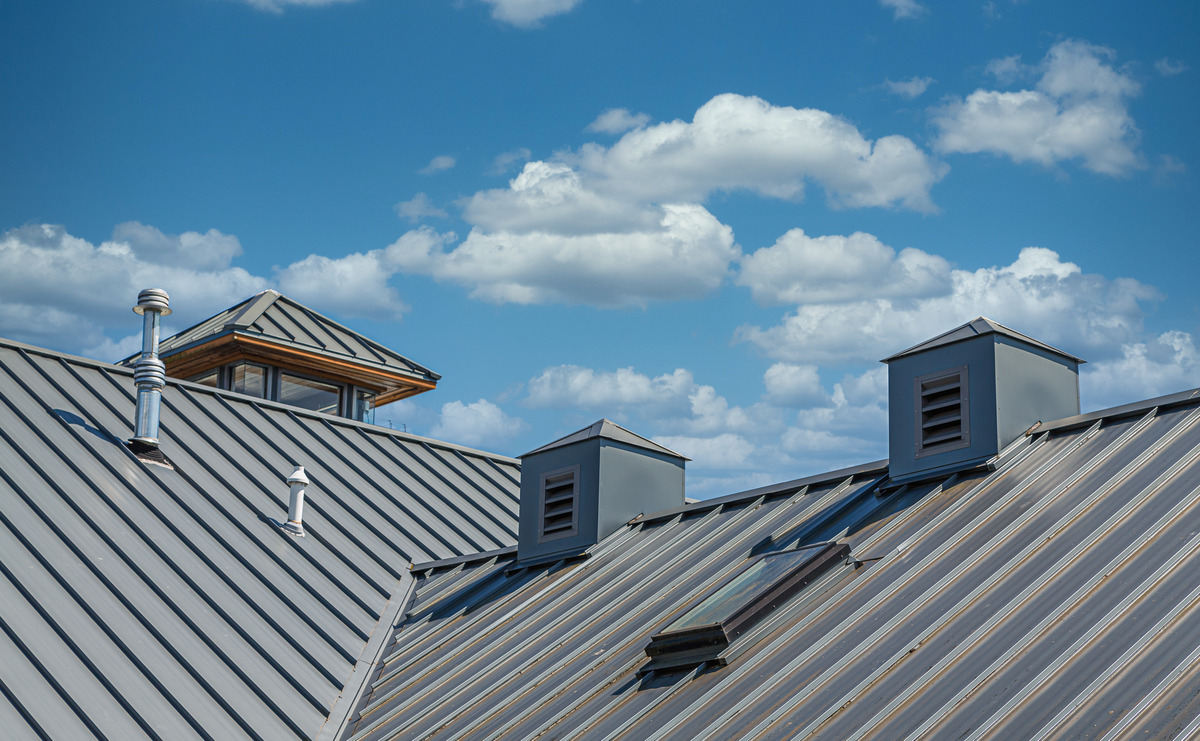Must-Have Standing Seam Roofing Tools for 2025

Professional metal roofers know that being prepared with the right tools, not just any tools, makes all the difference. If you're starting a standing seam metal roofing project, don't wing it. Make a checklist ahead of time, or you’ll find yourself halfway up the roof with the wrong bit and a long wait for a delivery.
Below is an updated list of essential tools for standing seam installations, including modern innovations that save time, improve safety, and boost long-term performance.
Metal Snips
Metal snips are still critical for cutting and shaping panels. Quality snips like Malco Max2000 are known for smooth cuts and ergonomic grip. Cheap snips? You might as well use a butter knife and pray.
As The Roofer's Guide to Metal Snips explains, most metal snips are color-coded for the cut orientation:
- Red: Right-hand use, cut straight or left
- Green: Left-hand use, cut straight or right
- Yellow: Straight cuts only
Bad snips = jagged panels = wasted money and time. Don't skimp here.
Seaming Pliers
Seaming pliers are another common tool necessary in manipulating the metal materials used to construct your standing seam roof. Seaming pliers bend, grip, or fold small pieces or sections of the sheet metal that you will use for your metal roofing panels. Seaming pliers are primarily used to create a seam in each metal panel so they can be joined together.
Hand Seamers
Hand seamers are similarly used to bend and fold sheet metal, as well as smooth and flatten wrinkles or bends. Hand seamers can create sharp angles, and they come in many different lengths and depths depending on the materials that you are using and the shape you are aiming for.
Many professional metal roofing contractors prefer hand seamers to mechanical seamers because they have more control. If you are a roofer who prefers manual work that allows for personal craftsmanship, then hand seamers are much better than an electric seaming tool.
Cordless and Battery-Powered Tool Innovations
Lithium-ion battery tech and brushless motor tools have completely changed the game. Cordless seamers, rivet guns, and drills now offer:
- Longer battery life
- Higher torque with less weight
- Better balance for safer operation
- Freedom to move without dragging cords across a hot roof
Brands like Dewalt, Makita, and Milwaukee lead the charge here (pun intended). Look for tools with belt clips and quick-charging batteries to keep things moving on the job.
Driver Bits
Every installer needs a quality set of driver bits. Essentials include:
- #2 square-head clip screw
- T25 wood screw
- ¼" nut driver
- 5/16" nut driver
- Chuck with 1/8" drill bit
Tip: Use a cordless impact driver with a clip for easy mobility. It’s not just a nice-to-have, it saves your knees and your temper.
Rivet Tools and Rivets
A rivet tool or rivet gun is another one of the standard tools for metal roof projects. Rivet tools are used to secure rivets into place to connect metal to metal like flashings to pipe penetrations, and the base of the roof.
Butyl Tape
Butyl tape is used for tightly sealing and securing the metal panels of a standing seam roof. Butyl tape provided a tight seal so it is also used to secure the base of a pipe boot or flashing to the metal roof panel.
Caulking Sealants and A Sealant Gun
Caulking sealants are used for metal roof sealing in gutters, vents, flashings, and skylights. Gun grade sealants will prevent leaks and water damage that can destroy a building and a sealing gun will help you make a more precise bead of sealant.
Thin beads of sealant are best for keeping a clean aesthetic on your metal roof and without a caulking gun you can end up with a sticky mess. Caulking guns allow you to apply a perfect line of caulking sealant to a metal pipe penetration to secure a pipe boot so no water will get in and destroy your work.
Digital Measuring and Layout Tools
For the roofers who like numbers more than guesswork:
- Laser measuring devices eliminate tape errors
- Digital angle finders help with custom flashing cuts
- Roofing layout apps calculate panel width and spacing in seconds
- Electronic seam guides ensure your seams are consistent from edge to ridge
These tools reduce waste, save time, and impress clients. They also reduce excuses when things go wrong.
Safety Equipment and Fall Protection (Because Gravity Doesn’t Care)
Updated OSHA regulations mean safety isn’t optional; it’s the rule. Make sure you’re stocked with:
- Full-body harnesses and anchors
- Guardrails and warning lines
- Non-slip roofing footwear
- Gloves with cut protection
- Hard hats that don't roast your scalp in the sun
Modern safety gear is lighter, more breathable, and shockingly, less annoying to wear.
One Last Thing...
This isn’t an exhaustive list. Each project may call for more specific tools based on panel type, roof pitch, and weather conditions. But this list covers the standard essentials and key innovations you need to avoid unnecessary delays and costly mistakes.
Need help sourcing tools or setting up your order?
Contact AMSI Supply today for expert advice and high-quality tools to match your next standing seam job.